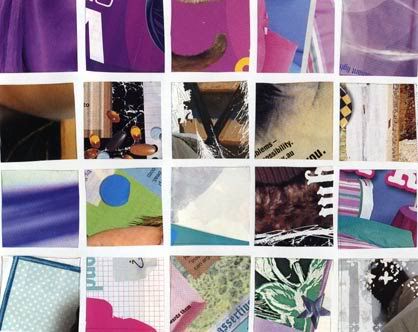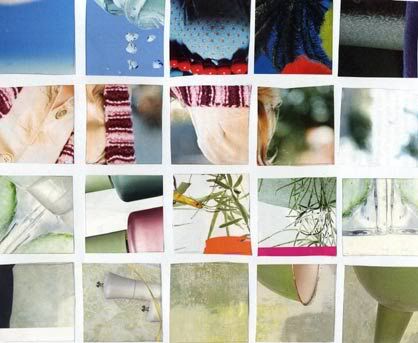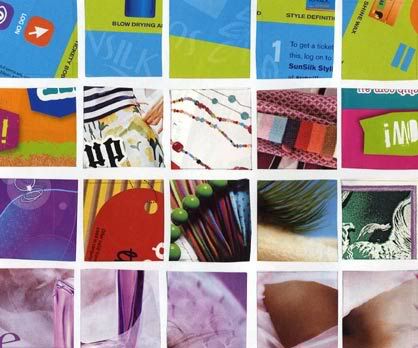Research findings
For my second project I visited the museum to get a feel for what exhibitions are there, what things interested me, and what I thougt would be a good subject for an online learning tool.
I think that I want to do the old perth gaol. Partly because there is not much on display about it, but it fascinates me, and it is real history in the museum - the building itself has a fascinating history. I felt a bit sad that there wasn't more about the gaol itself on display, that the gaol was full of other exhibits.
I asked about if there was any more information about the old perth gaol, and a lady came who knew alot about its history and showed me around the building. I found it so interesting to walk around the rooms, that she explained what they used to be, and it was especially intersting to think of the side where executions took place. It is spooky for me to think of the people who died at that palce, and yet there is no real information around the building itself, only what the guide told me.
This made me think that the two small cabinets about the old gaol weren't enough! that there was such fascinating history in the building that needs to be told!
I want to try to capture the interst that I feel for that the building has such intersting history that people don't even think about as they browse the exhibitions inside it.
project 1
My first concern when I approached the project was to learn some flash. I had tried to learn it last semester, and given up, so I was very concerned to make sure I could learn enough in four weeks to produce the project. I began doing the tutorials earnestly, and tried to think always of the project as I was doing the tutorials.
I found brainstorming the idea of flip very helpful. I wanted to produce a more interactive environment than I had done last semester. Last semester I really just produced an animation that played through and then could be replayed, but this time I wanted to take into account designing an environment that the user could make different decisions in in different orders.
I took a simple scene of a light, coin and flip-book, that the user could interact with so that I could spend the time learing flash and exploring the word flip. I wanted there to be some variables to store the state of the light and the coin, and for these to be remebered so that they would effect the outside environment. I took the idea of flip often involving two sides - like off or on (of the light) or heads or tails (of the coin). Flipping the light effects the environment to have the light displayed as off or on, and flipping the coin effects wheter the "heads" or the "tails" annimation is shown when the flip book is flipped.
I wanted to explore the idea of flipping and animation. The idea of an invironment that has various interactions that the user can make at different times, and the flash movie remembers what choices were made, and it affects other things.
For the sound, I played a short repetitive melody on my violin and recoreded it. I tried to make the melody sound kind of like flipping because it has a repetative sequence of notes that flips from a low note to three descending repeted notes, that makes the melody kind of like flipping. I also chose notes that I thought sounded good on their own, but that would combine harmoniously when flipped over eachother.
I wanted the soundscape to repeat and randomly flip over itself, as a random result of the users interactions with the movie. I found that I liked playing with creating deliberate patterns with the soundscape and can make very interesting interactions when the layers of sound flip over eachother.
To help navigation I also included "flip" and "back" sounds to help people know how to navigate the movie.
I am happy that I achieved my aims for the project. I feel like I learnt alot about flash in a short time, and I feel that I explored the idea of interactivity by creating an environment where various user action effect different things in the environment.
I think I would like to have improved the animation by exploring other elements about the word flip, if I had have had more time and more knowledge about flash. I would especially have liked to explore the idea of flip-flop as being the type of circuts in early computers, and extending the idea of the essentially binary nature implied by the word flip. There are two sides to a coin, you flip something over and inverse it, you flip and then flop. If I had have had more time, I would have liked to explore more abstract concepts about the word flip.
Second story interactive
The forensic science exhibition.
The designers aproaches to designing for education in this instance seem to be to present lots of good factual data in a web page format suplimented by video sound and pictures.
I think that it is excellently and beautifully presented visually, but the multimedia elements aren't really integrated into the piece it is a text-information based web page with multi-media snippets suplimenting it.
I think that the information is engaging and the information is good, but in light of thinking about the whole designed experience, it feels a bit disapointing because the multimedia elements seem to be just extras to the text and not fully a part of the whole learning experience.
flip brainstorm
flipping hamburgers - flipping futile, careless, boring underpaid work
colour flip - inverse colours, reverse images
flipping my collage squares around to find the best angle. The way flipping the collage creates different patterns, different focuses, different relationships to the other collage squares.
flip - negative and positive
flip - two sides to one coin - positive and negative of things
"on the flip side" - a less familiar side of something that you don't normally see. usually hidden.
flip flop - as a noise - flip is only half of the noise of a flip. Reminds me of a convex shape that flips into a concave shape and flops into a convex shape again.
flip-flop - early computers - two states of the circuit. Flip of computers - positive and negative, binary states of flip and flop, zeros and ones.
flip open a can
flippant - careless, offhand, don't care
flip - throw carelessly
flip out - throw a tantrum, go crazy
flip your lid - get angry
flip through a book - careless, not really interested, not reading in depth, just getting a cursory idea.
flip book - animation
back flip - soumersault. Go back on what you originally decided
Maya Lin - Between art and architecture
Maya Lin's approach to designing an experience in the Vietnam war memorial started with her personal feelings and reactions. She ended up being chosen as the design to be built from thousands, and yet she said she "designed it for me... what I believed it should be."
Her design process started with asking questions about what is a memorial, and what should it do. She thought about and researched these questions. Thinking about the design of an experience, she looked at other memorial designs that she found extrememly moving - that had honesty about the reality of war and loss of life, and remembering those who died. She conciously decided not to research the Vietnam war and politics about it. I think this is an interesting point - to deliberately decide not to research something that seems like it would be something you would need to research. Because she wanted to make the memorial an experience that everyone would respond to.
Names and the inscription of names were important to her. She had personal experiences with finding the inscriptions of names a moving and powerful experience, and this is something that many people find a powerful experience too. I think this comes back to that Maya Lin's design process was very personal to her, but that her experience also makes a design that many people also find powerful and moving.
After some research and thinking she then realised she needed to actually see the site. I think this is important in her design process of creating an experience. When she was there she said she felt instinctively to carve and cut into the earth. She has a personal instinct of what to do, and it is then built upon and developed into her idea, which makes a rich layered expereince at the memorial.
She made various design choices to make relective surfaces, chronological listing of names, small typeface etc. that she chose to make certain experiences in visitors to the memorial. She had a clear vision of why these choices needed to be made, and she had to be very insistant to make sure they were built. I think she had a good overall picture of the experience she wanted to create, and then she chose details to enhance the overall idea. This seems a good idea for me to remember to keep an overall picture of what experience I'm trying to create while chosing the small details.
I found it very interesting that she observed that she was probably more controversial by not taking sides politically. Because she tried to stay neutral, no-one was on her side, she was even more controversial than if she had have taken a side.
Yugo Nakamura - Nervous
Yugo Nakamura talks about his approach to design being about trial and error, constant growth and change and accidents.
I found it interesting when he talked about his realisation that what he perceives is in itself an interaction with the outside world. What you sense is determined by how you interpret what you sense as much as by the thing being sensed. This is interesting to remember the significance of any experience is determined not just by the experience itself but by all the past experiences of a person.
In a multimedia work, the viewer is invited into an experience with the work, but the creator is not the only creator of the meaning of the work, the viewer him/herself creates the expereince. This would lead to a fulfilling kind of multimedia expereince, when the viewer is involved in the meaning-making expereince. Chance discoveries play a large part in peoples discoverys and interest.
Yugo wants to create reactive fields that are unique communication experiences, which react to user actions in a way appropriate to the particular user. He wants to be able to make his work able to take into account people's histories and ways of behaving and expecting things to behave and make the interface react to the user.
At www.yugop.com there is an interesting work that you can play with that has bouncing balls that react to clicking and throwing them. This work reacts to different ways of interacting with it, there is an auto mode where the user can watch and play with the balls to move them, but there is also automatic movement that happens which helps the user want to interact with it, and wonder what is possible.
The movement of the balls seems quite realistic and interesting the way they bump against each other and fall over. And the way when you throw them they disapear off the screen and then return.
There is also a manual mode which allows the user to interact even more with the work, and allows them to choose how big the balls are and when to insert another as well as to move and throw the balls.
I think this work is engaging because it makes the user involved, it feels like you have choices and can explore what is possible without being given usual instrauctions like "click and drag" "throw balls" etc - the user works out how to interact by observing the work itself. It is also engaging to wonder about the patterns that are driving the balls, what rules are they following. I found myself setting up little experiments to see if the balls would behave in a certain way when I tried certain things. I found it very engaging to try to explore this little world and discover how things work, and how I can change them.
My experience of this work is enhanced by thinking about Nakamura's design aims. I need to think about designing multimedia for users to be able to interact how they want to interact, to set up choices and to intrige them as to what is possible, and to make users feel like how they want to interact with the work is possible.





